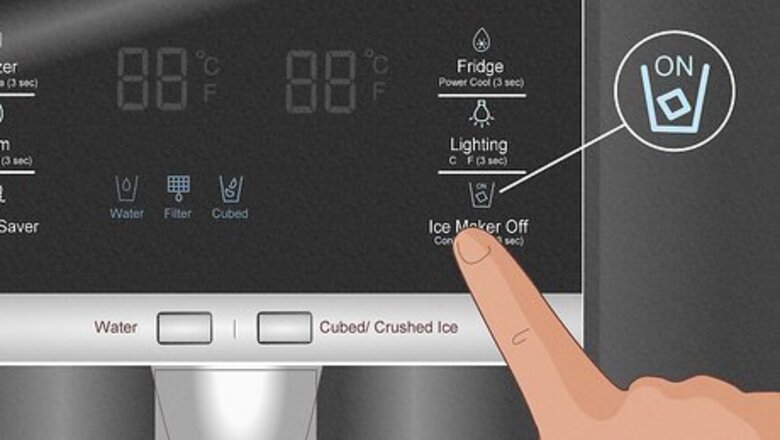
views
- Make sure your ice maker is turned on at both the panel and the ice maker on/off switch. Also, check to make sure the door switch isn't malfunctioning.
- Make sure your freezer temperature is set to 0 degrees. Make sure the fill tube, ice mold, or ice dispenser isn't clogged or there aren't any frozen mechanical parts.
- Make sure your water line isn't leaking or clogged. Check to make sure your water filter isn't clogged or needs replacing.
Make sure your ice maker is turned on.

The on/off switch is usually located on the refrigerator panel. If the "Ice Maker Off" icon is lit up, press and hold it for about 3 seconds to turn it off. Also check the inside of your ice maker. It's either in the upper-left corner of your refrigerator or built into the door. You may need to remove the ice tray to access the ice maker. Look for an on/off switch or button you press and hold to turn the ice maker on.
Make sure the control arm or infrared beam isn't obstructed.
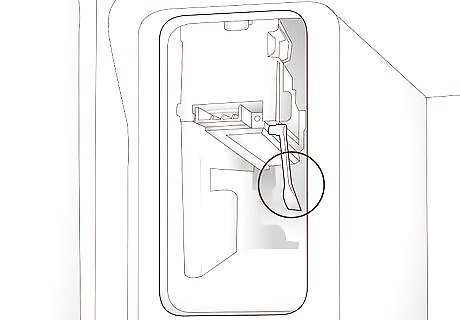
Some ice makers have a control arm that raises when the ice tray gets full. Others have an infrared beam that senses when the ice is full. Make sure there is no stray ice preventing the control arm from rotating or blocking the infrared beam.
Make sure the ice bucket or tray is inserted properly.
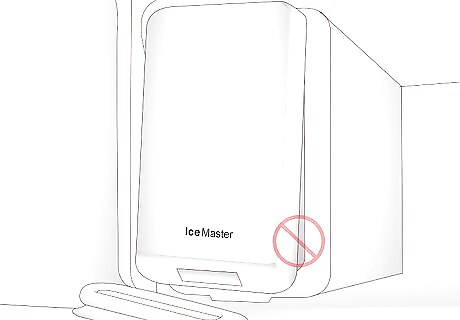
If the ice tray isn't inserted all the way, the ice maker will not produce ice. Make sure the ice tray is inserted all the way and that it is latching shut. Also check inside the ice maker to make sure there isn't any ice obstructing the ice tray.
Make sure the dispenser, mold, or ejectors aren't clogged.

If there is no ice dropping, the dispenser, ice mold, or ejector arms could be clogged. Make sure there is no ice blockage in the chute, mold, or ice ejectors. Clear out any ice clogging the dispenser or ejectors with a plastic knife or allow your freezer to defrost. You can also use a hair dryer to defrost any ice that is clogging the ice maker.
Make sure the temperature is set to 0 degrees.
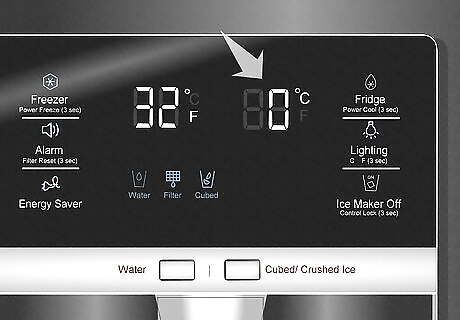
This is the ideal temperature for any freezer. If the temperature is too warm, the ice maker may shut off automatically. If it is too cold, water may freeze before it reaches the ice mold. Check the user's manual for your refrigerator model to learn how to set the refrigerator temperature.
Make sure the fill tube isn't frozen.
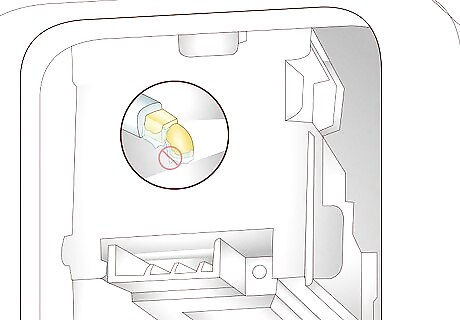
If your freezer is too cold, the fill tube that fills the ice mold may freeze and prevent water from reaching the mold. If the fill tube is frozen, you can allow your freezer to thaw out, or defrost it with a hair dryer. The fill tube is usually located in the back of the ice maker or above the ice mold. You may need to remove the ice maker in order to access the fill tube.
Make sure the door is sealing properly.
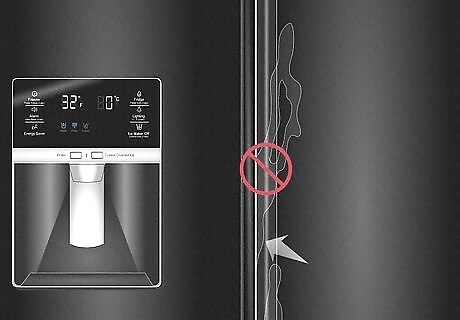
The door seal keeps cool air in and warm air out. If the door isn't sealing properly, the temperature inside your freezer may not be able to stay cool enough to make ice. Replace any defective door seals.
Make sure the door switch isn't malfunctioning.

The door switch is usually a small shaft that you can press at the top of the door. If the light does not turn off after a few seconds when you press the door switch, it may be damaged and need replacing.
Check the water pressure.
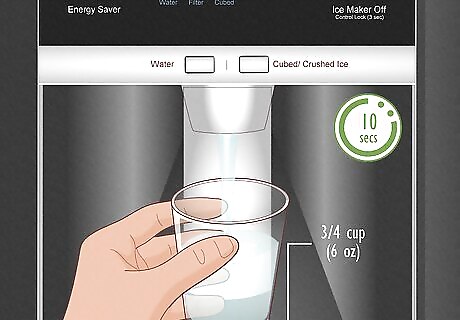
The water dispenser should be able to fill 3/4 cups (6 ounces) in less than 10 seconds. You can use a measuring cup to check the water pressure. If the water pressure isn't strong enough, there could be a problem with the water line, valve, faucet, or water filter.
Check the water line for damage or clogs.
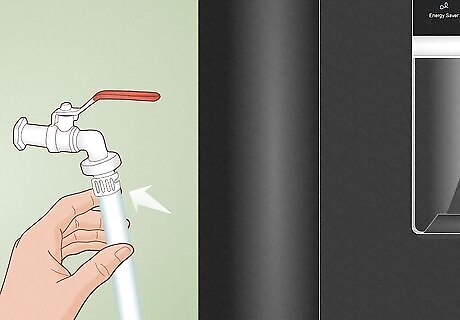
If there is a problem with the water line, it will prevent your ice maker from receiving the water it needs. Check the water line, which is a small plastic or copper tube that connects from the water faucet to the water valve on the back of the refrigerator. Check the line for leaks, kinks, or clogs. Water leaking inside the freezer could be a sign of a water line leak. Also check to make sure the faucet the water line is connected to is turned on and that there is no leak where the hose connects to the faucet. Some Samsung refrigerators have two water lines for different purposes. If these water lines get cross-connected, the ice maker will not work properly. Check to make sure the proper water line is connect to the correct connector.
Check the water valve for damage or leaks.

The valve is usually located on the back of the refrigerator where the water line connects. The water pressure from the valve needs to be at least 20 psi for it to function properly. If the valve is leaky, the ice mold may overfill. If it is damaged, it may not open to allow water to flow. Replace the water valve if need be. To replace a water valve, you will need to turn off the water and disconnect the water line. Then remove the back panel from your refrigerator and remove the valve mounting bracket. Remove the wire harness and the valve assembly. Attach a new assembly to the wire harness and mount the new valve assembly. Reattach the back panel, along with the water line, and turn the water back on.
Check to see if the water filter needs to be replaced.

You should change your water filter every 6 months. If you do not, the water filter may become clogged with sediment which will restrict water flow to the ice maker. Check the documentation that came with your refrigerator to learn where the water filter is located and how to change it. Some after-market filters may not work as well as the ones that came with your refrigerator. Make sure you get a water filter that is right for your refrigerator model.
Reset your ice maker.
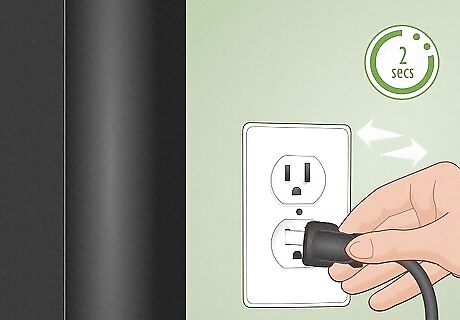
To do so, unplug your refrigerator for 2 seconds and then plug it back in.
Run a test cycle.
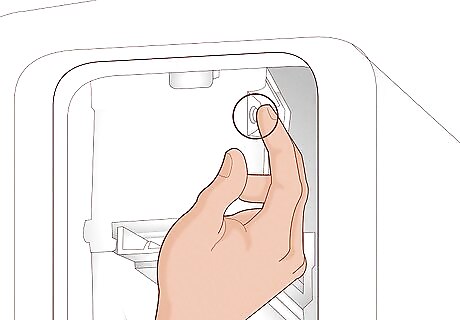
There should be a test button located somewhere on your ice maker. You may need to remove the ice bucket or ice tray to access it. Press and hold the test button until you hear a chime. Replace the ice bucket or ice tray and wait for the test to complete. It'll take about 6 minutes. You will hear a chime when the test is complete.
Check for error codes.
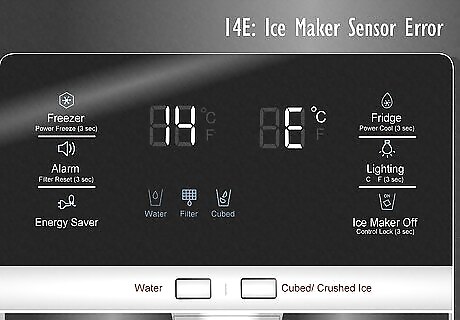
If there are any error codes on the refrigerator panel, they can tell you what is wrong with the refrigerator and what needs to be fixed. You can check error codes for a Samsung refrigerator here.
Allow 8 hours for ice production to return to normal.

After performing all of the above troubleshooting ice, you may need to wait up to 8 hours for ice production to resume as normal.
Call for a repair.

Ice makers have many components that can fail. If you can figure out what is wrong with the ice maker, you may need to contact a repairman to fix your ice maker. Ice makers generally have a relatively short life span and may not be worth fixing. It might be less expensive to replace your ice maker. You can request service from Samsung by calling 1-800-SAMSUNG.




















Comments
0 comment